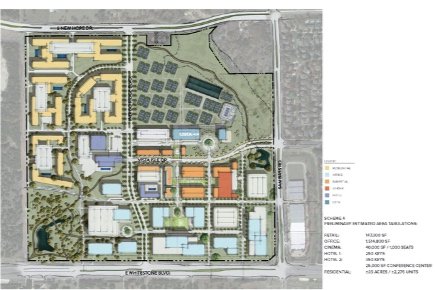From Plans to Profit: How Economic Impact Analysis Turns Vision Into Value for Land Developers
A few weeks ago one of our client’s, a big land developer in Florida, asked for forecasts on job creation, income levels, and expected state sales tax revenue from a future city built on land that currently is agricultural. They needed this info for a meeting with the Governor and State Legislature to talk about financial support for a new interstate exit, which is crucial for unlocking the economic potential of the land. Florida Job Growth Grant Fund’s, for example, are awarded to the Department of Transportation to support new interchanges.
We have been collaborating with this client on a residential and mixed-use master planned community for the past six months. A well-known urban planning and architecture firm designed the plan with different building densities. The busiest, densest, area is planned near the new exit, featuring retail centers, hotels, and apartments above commercial space—creating a vibrant town center. We developed an economic and financial model of this plan that can adapt as the project evolves.
So when the request for information was made, we were able to produce that information from a regional economic impact model we created for the development.
High-level for demonstration purposes only:
$1 million in annual state sales tax revenues are generated for every $15 million in taxable sales and commercial leases at full build-out.
1 job is created for every 175 SF in commercial space built by businesses at the master planned community, a mix of which are in professional, technical, medical, health care, education, retail, and service-oriented occupations.
About 3 single-family housing units and 50 multi-family units will be built on an acre of land depending on the various zones in the plan.
You can begin to see how important a new interstate exit is to create this future regional economy. An economy that is filled with new Florida residents, taxpayers, consumers, schools, and businesses of all sorts. And the state impact from this regional economy means an available revenue stream that can help pay for the new exit over time.
That’s what is meant by using economic impact analysis as part of residential and mixed-use real estate development strategies. We have many other examples of clients successfully using economic impact analysis to supplement their development pro forma with state and local financial incentives.
It may sound simple—even obvious—but great development starts with great strategy. Schedule a call with Jerry Hoffman at Hoffman Strategy Group to see how economic impact analysis can strengthen your real estate development strategy.


